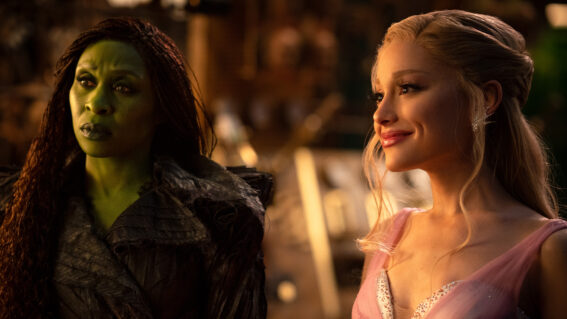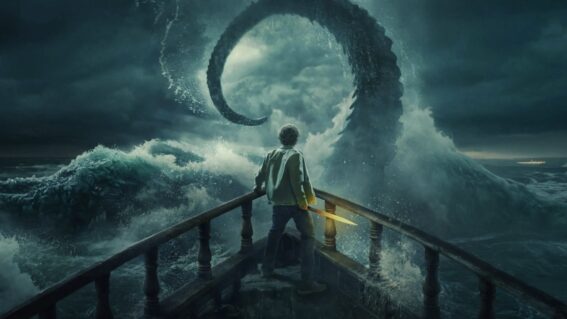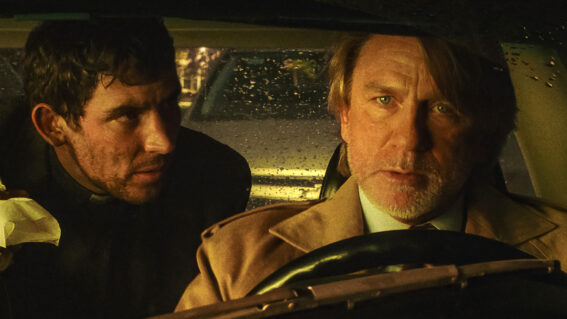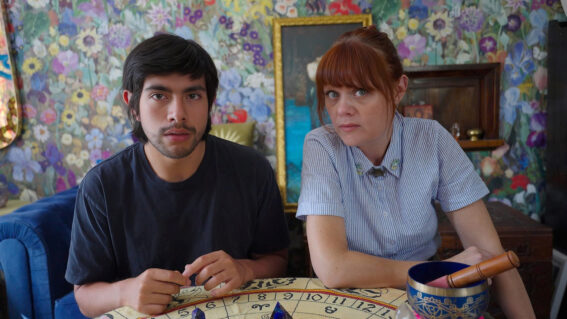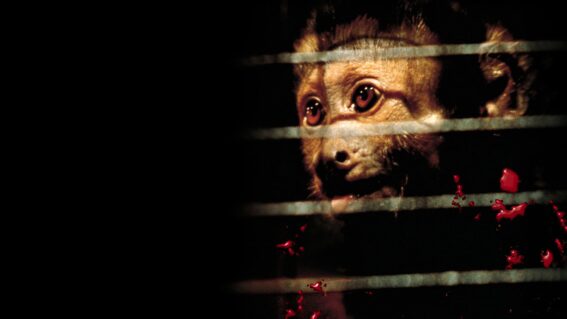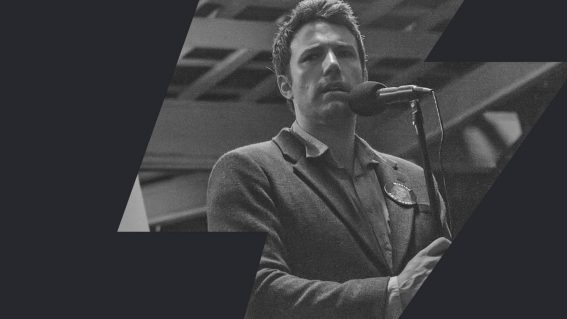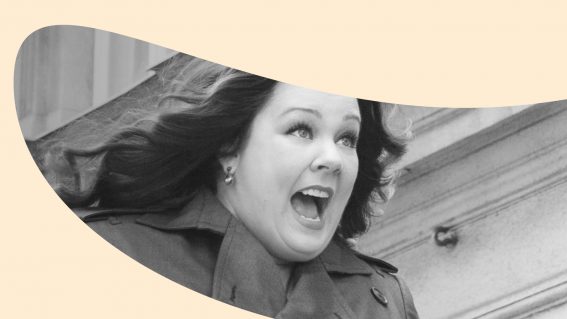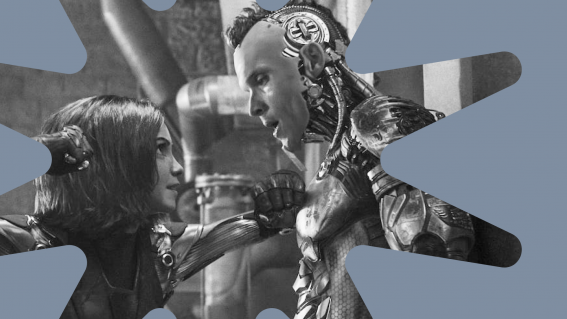Late Night with the Devil + 3 more television-centric horror movies
Video killed the radio star—these cursed tapes tapped into analogue-era eeriness long before the Cairnes Bros’ film.
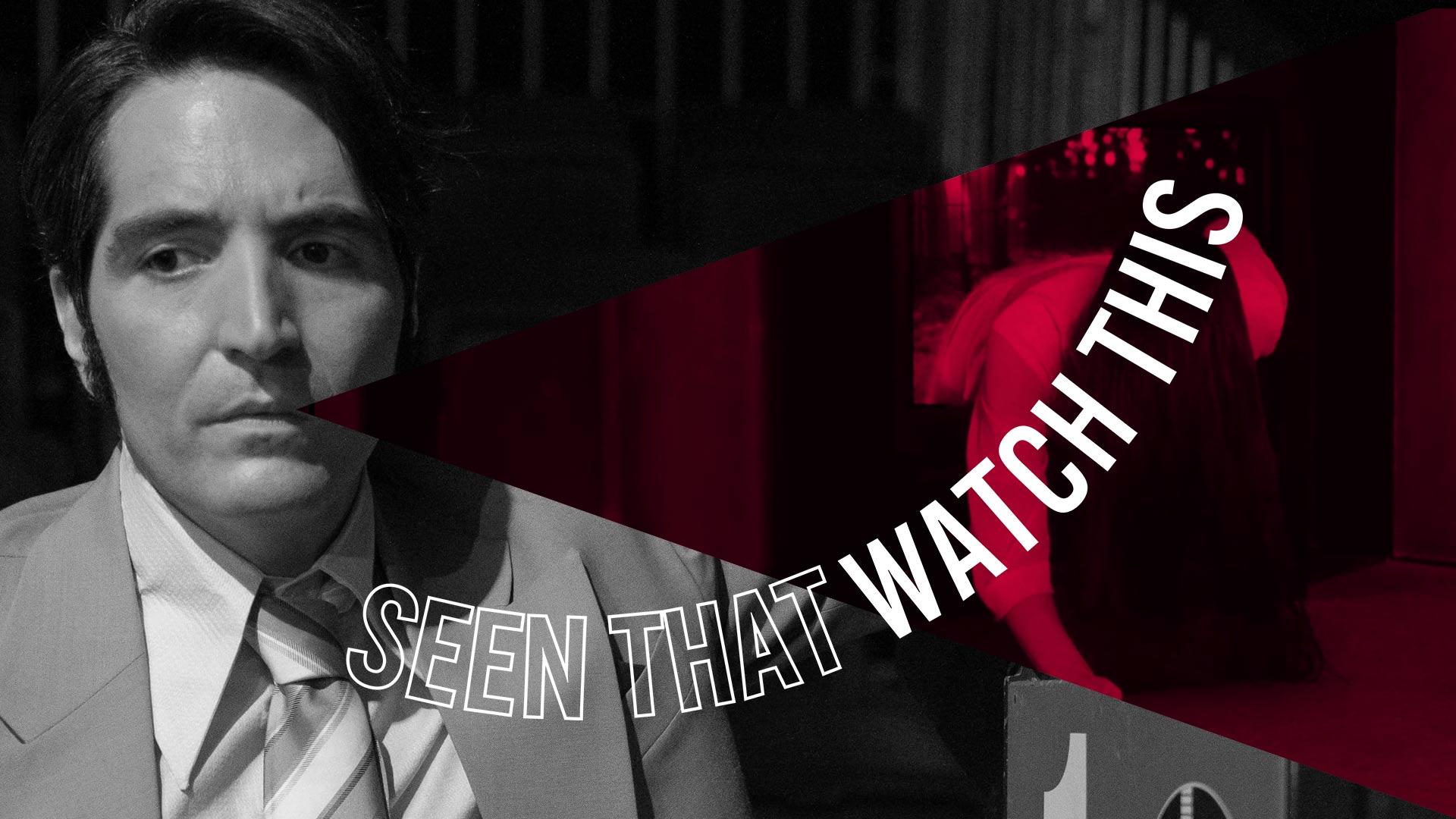
Seen That? Watch This is a semi-regular column from critic Luke Buckmaster, taking a new release and matching it to comparable works. This week, Late Night with the Devil‘s old-school found footage recalls other great, analogue-era horrors about cursed tapes and TVs.
Telling the story of a live talk show broadcast from the 70s that went badly, nay horribly, nay satanically wrong, Late Night with the Devil dusts off the found footage genre and gives it a freshly horrific sting. There were times, afterwards, when I realised how weirdly this film had wiggled its way into my psyche. Before driving home from the cinema, for instance, I discovered myself checking the backseat to make sure nobody—or no ghoul—was there waiting for me. Which strikes me as particularly strange behaviour given the film’s slightly campy, throwback style; in other words it has no business being this scary.
The story is far-out but some important things ring true: namely the desperation of Jack Delroy (David Dastmalchian) to boost ratings for his late night talk show, which pale in comparison to The Tonight Show Starring Johnny Carson. Thus Delroy has no qualms in asking a parapsychologist, Dr. June Ross-Mitchell (Laura Gordon), to conjure a demon that possessed a young girl (Ingrid Torelli) despite being warned that things might go terribly wrong. And indeed…things go terribly wrong.
By centring the narrative around a live talk show, Australian co-writers and directors Colin and Cameron Cairne cleverly address some of the found footage genre’s greatest challenges. For instance: why do people keep endlessly filming themselves? Here of course Delroy’s show must be filmed, and it should look professional. Thus the (comparatively) polished aesthetic of Late Night has a rock-solid logic: it was an actual production in the narrative universe, not a series of scenes featuring snotty-nosed schlemiels running around in a park.
Nothing about this film is truly original, but merging “power of Christ compels you!” horror with a talk show format was a stroke of genius, enlivening even the tritest bits. Plenty of other engrossing horror flicks have wholeheartedly embraced television as a way to make their concepts sizzle; here are three more.
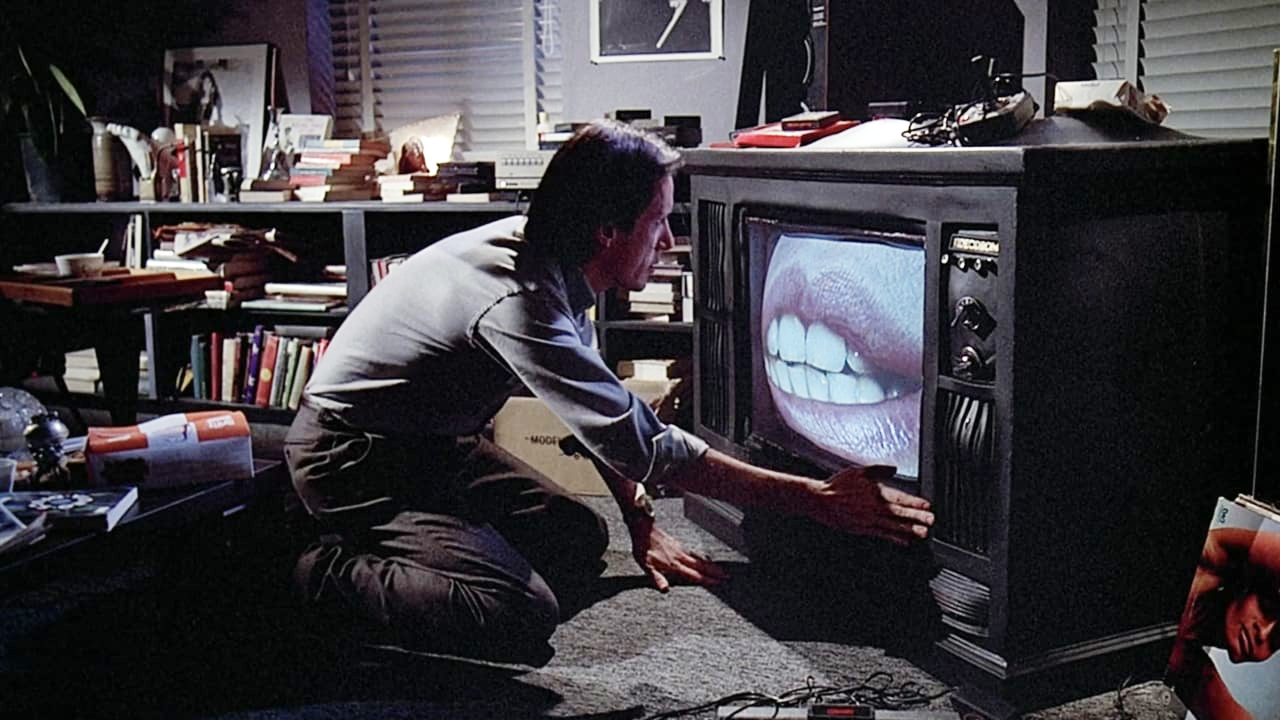
Videodrome (1983)
One could debate the meaning of David Cronenberg’s unhinged commentary on media influence ad infinitum, but we can all agree that it fuses television and the human body in the creepiest of ways. This connection is reiterated through the film’s famous line “long live the new flesh,” and visually expressed through insane imagery—such as a video tape being inserted into a gaping, disgusting hole in the protagonist’s gut. He is James Woods’ Max Renn, the head of a TV network that specialises in sensationally gratuitous media—“everything from softcore pornography to hardcore violence.”
Renn starts watching a production called Videodrome—which includes torture footage—and sees dollar signs: a low-cost, single setting, high impact production. He thinks the footage is fake but is warned that it’s real: snuff TV. In a sense it turns out to be more than real, merging nightmare and reality, turning all life and perception into a big sticky-icky mess. There’s a terrible absence of morality in this film; no characters or events offer a reprieve from its brilliantly evoked ghastliness.
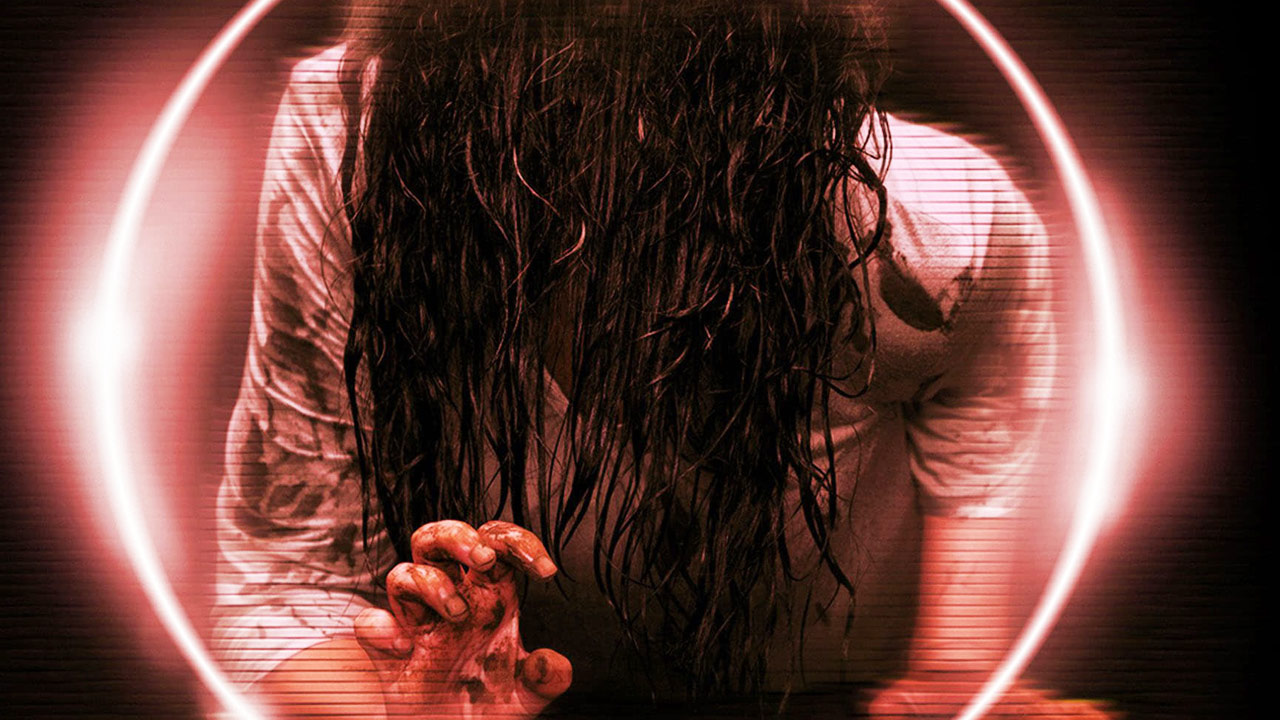
Ringu (1998)
Hideo Nakata’s Japanese classic is one of cinema’s great “ghost in the machine” yarns. The ghost being a very creepy woman with long black hair over her face, and the machine a good old fashioned TV hooked up to a video player. And when I say a ghost in the machine, the film’s most iconic moment occurs of course when the apparition comes out of it, an action for which the phrase “breaking the fourth wall” does not begin to cut it. That moment comes right at the end, with less than 10 minutes left on the clock, unfolding with the weight of the entire film behind it.
Nakata could’ve easily milked this visual concept but his direction is eerily calm and calculated, with bursts of occasional bedlam that take you by surprise. Nanako Matsushima’s Reiko is a journalist who investigates what sounds like an urban legend, though things get frightfully real when she locates a cursed tape that’ll kill anybody who watches it unless they show it to somebody else. This realisation is only learned, again, at the very end of the movie, speaking to the film’s tendency to stretch out long suspenseful moments before finally, shockingly, going in for the kill.
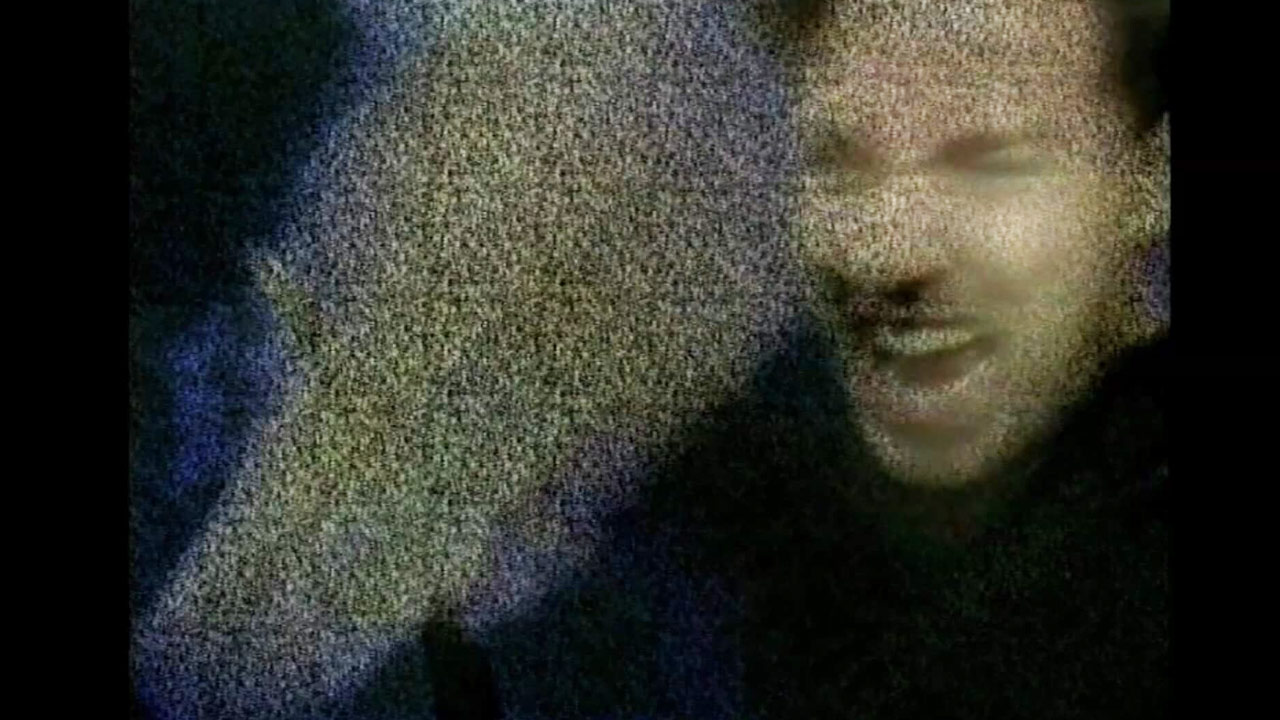
The Last Broadcast (1998)
Combine the words “found footage” and “camping” and everybody thinks “The Blair Witch Project.” But in fact directors Stefan Avalos and Lance Weiler entered this space first with The Last Broadcast, which they made on an even cheaper budget. And while Blair Witch is a far superior production, their film is an interesting curio, focusing on the hosts of a public access TV show called Fact or Fiction who ventured into the woods and never returned, while making an episode investigating a legend known as “Jersey Devil.”
Like Late Night with the Devil, the film is presented as a documentary investigating what happened. Interviewees (a forensic pathologist, for instance) reflect on the ins and outs of the case, while the found footage elements add colour and immediacy. These are the strongest parts of the film; Blair Witch of course doubled down, being entirely structured this way. The Last Broadcast is pretty scratchy, but shows an impressively go-for-broke devotion to its premise and has an impassioned sense of fakeness. It really does feel like an actual production, beamed in from another reality.














